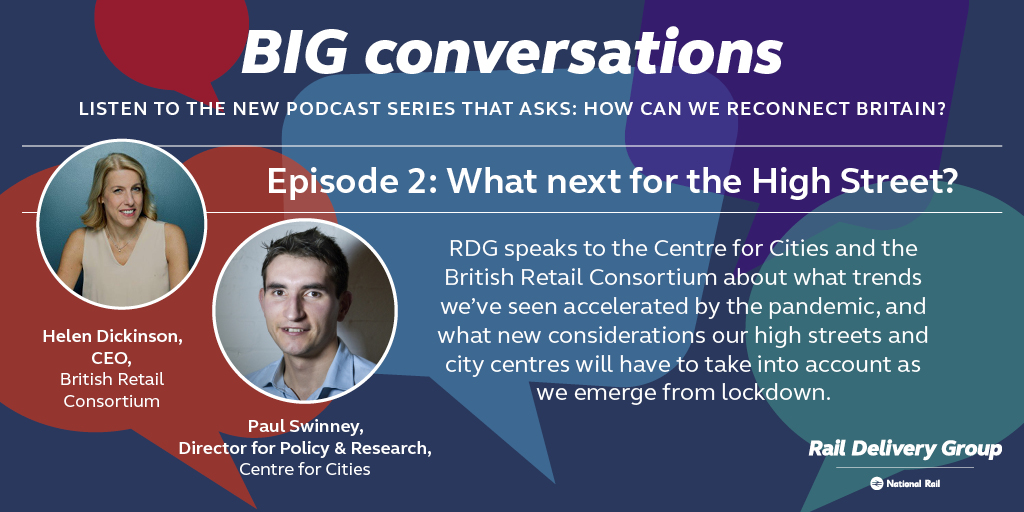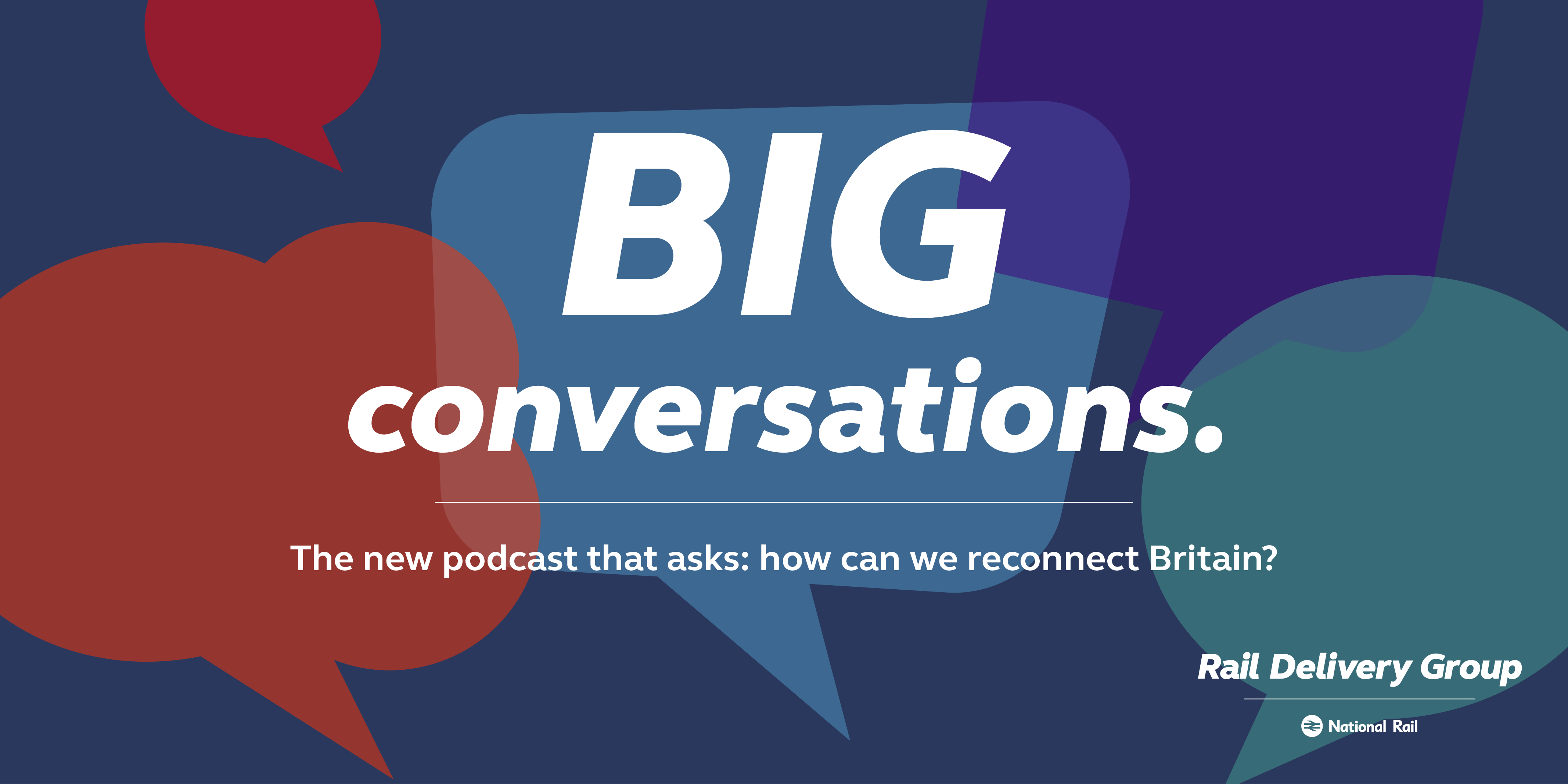As the high street reopens, retail and rail need to have imagination
By Jacqueline Starr, CEO, Rail Delivery Group
As we prepare for all shops to reopen next week, I am struck more than ever by the interconnectedness of our economy, our high streets and our railway.
Listening to the latest RDG Big Conversations podcast in which Helen Dickinson, CEO, British Retail Consortium and Paul Swinney, Director of Policy and Research, Centre for Cities discuss what’s next for the high street, it is clear that the economy, city centres and the railway must recover together.
Paul’s assertion that cities play an outsized role in our national economy was backed by the stark figures Helen laid on the table – £22 billions’ worth of lost sales during the pandemic with footfall down in retail hubs by 40% on average, falling to 70 - 80% in large city centres such as London and Manchester.
What was also clear as I continued to listen was that we are not going back to what we had before. No one in business, not least in retail and rail, can sit King Canute-like and ask the tide to roll back to where we were in 2019. Things have changed and we need to have the responsiveness and imagination to thrive in the recovery.
Throughout the pandemic train operators have been nimble in response to changing demands. We are seeing this again in their response to retail reopening from Monday. As the country takes the next steps out of lockdown, rail companies are running more services and longer trains, increasing space to support social distancing as part of the rail industry’s safer travel pledge.
Rail companies have been closely monitoring passenger numbers and adding services where necessary, alongside boosting cleaning, to make sure people can travel with confidence. More than 1,000 weekday services have been added since mid-February from approximately 16,900 per day to almost 18,000 from Monday with an even more significant service uplift planned for May.
Alongside the agility and alertness in rail’s response to new and evolving travel patterns as a result of Covid-19, we need to have the imagination to see how the behaviour of our customers may look very different in the future.
Helen speaks in the podcast about the need for city centres to adapt, thinking about agile working spaces, care in the community, and how retail space can be converted to meet the housing and environmental needs of the local area.
How are train operators thinking about this new world? What does agile working mean for the daily commute, for what we provide for business passengers while on route and for how we give passengers the flexibility they need from fares and ticketing in a world of agile and hybrid working?
While Paul expects a ‘sharp bounce back’ for the economy, fed by pent up demand, he also believes that city centres will continue to be important places to do business and that public transport is critical to gets workers to those city centre jobs consistently and efficiently.
His argument is both a compelling one and one which poses some challenges for rail planning and infrastructure: it will simply not be possible, even in a world of more home-working, to transport commuters – 10,000s, 100,000s and in London’s case millions – into city centres everyday by private transport.
Clearly, rail has a big role to play in the recovery by getting people into town and city centres but what is also important for high street businesses is good transport connections within urban centres. What capacity has rail got to meet this demand with current and future infrastructure? How do we plan and innovate to support the first and last mile of every journey in this brave new world?
Reflecting on rail’s role in reconnecting business, retail and workers as we emerge from lockdown, what I am sure of is that innovation and imagination is vital to take rail and the nation forward.

